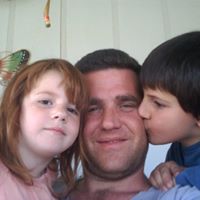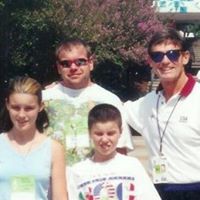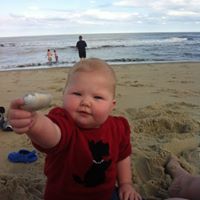Richard E Quick
age ~61
from Irvine, CA
- Also known as:
-
- Richard G Quick
- Richard Gene Quick
- Richard Click
- Phone and address:
- 5200 Irvine Blvd, Irvine, CA 92620
Richard Quick Phones & Addresses
- 5200 Irvine Blvd, Irvine, CA 92620
- 2132 Via Teca, San Clemente, CA 92673
- 2951 Veranda Ln, Corona, CA 92882
- 1751 Waldorf Dr, Corona, CA 92882
- Big Bear Lake, CA
- Victorville, CA
- Grass Valley, CA
- Tustin, CA
Resumes

Engineering At Senorx
view sourceLocation:
Orange County, California Area
Industry:
Medical Devices
Name / Title
Company / Classification
Phones & Addresses
Owner
Quick Electric
Trade Contractor
Trade Contractor
2132 Via Teca, San Clemente, CA 92673
9493660366
9493660366
Us Patents
-
Tissue Specimen Encapsulation Device And Method Thereof
view source -
US Patent:6344026, Feb 5, 2002
-
Filed:Dec 9, 1998
-
Appl. No.:09/208535
-
Inventors:Fred H. Burbank - San Juan Capistrano CA
Richard L. Quick - Trabuco Canyon CA
Jacob Frank Louw - Carlsbad CA
Michael L. Jones - Capistrano Beach CA
Paul Lubock - Laguna Niguel CA -
Assignee:SenoRx, Inc. - Aliso Viejo CA
-
International Classification:A61B 500
-
US Classification:600567
-
Abstract:A device for encapsulating tissue specimens includes a wand assembly, a sheath, and a guide assembly. The guide assembly pulls, draws, or otherwise moves the sheath about the tissue specimen. The wand assembly is disposed proximate to the tissue specimen, typically either adjacent or through the specimen. In an aspect of the encapsulating device, the guide assembly has sheath deployment members that are disposed about the tissue specimen. The sheath, which is attached to ends of the sheath deployment members and the wand assembly, is drawn over the tissue specimen as the sheath deployment members are pushed or pulled. In another aspect of the device, the guide assembly is an arm or a housing that rotates about the tissue specimen. The sheath, which is secured at one end to the guide assembly and at another end to the wand assembly, is drawn over the tissue specimen as the guide assembly rotates. The sheath may be made up of porous material, non-porous material, selectively permeable material, woven material, braided material, knit material, web material, mesh material, a film material, a flexible laminate material, or of an elastic material.
-
Suturing Instruments And Methods Of Use
view source -
US Patent:6346111, Feb 12, 2002
-
Filed:Sep 30, 1999
-
Appl. No.:09/409332
-
Inventors:Norman S. Gordon - Irvine CA
Robert P. Cooper - Yorba Linda CA
Richard L. Quick - Trabuco Canyon CA -
Assignee:Scimed Life Systems, Inc. - Maple Grove MN
-
International Classification:A61B 1704
-
US Classification:606144, 606139, 606147
-
Abstract:A method and device for the placement of sutures and for the purpose of approximating tissue. The invention relates to devices for approximation, ligation and fixation of tissue using a suture, to various constituent parts comprising said devices, and particularly to the placement of sutures into certain difficult to access ligamental structures, to the approximation of tissue separated by means of an endosurgical trocar being inserted into a body cavity, and to approximation, ligation, and fixation of body tissue using both traditional open surgical and endosurgical techniques and instruments. The invention provides for the loading of suture material including needles into the device, introduction and placement of the device into the body cavity, with the distal end having deployable needle guides, extending the needle guides either simultaneously or individually to the periphery of the wound, engaging the wound with the needle guides, driving the needles and suture material through the tissue to be approximated into a catch mechanism, retracting the needle guides and withdrawing the device, leaving a loop of suture material in the margin of tissue. The suture may then be tied to approximate the wound and excess suture material cut off. The invention also provides for the placement of sutures for the endoscopic approximation, fixation, and ligation of tissues within a body cavity including the driving and retrieval of needle and suture combinations, and facilitating the tying of knots.
-
Apparatus And Method For Accessing Biopsy Site
view source -
US Patent:6471700, Oct 29, 2002
-
Filed:Jan 4, 2000
-
Appl. No.:09/477255
-
Inventors:Fred Burbank - San Juan Capistrano CA
William C. Homet - San Juan Capistrano CA
Paul Lubock - Laguna Niguel CA
Richard L. Quick - Mission Viejo CA
Martin Shabaz - Lake Forest CA -
Assignee:SenoRx, Inc. - Aliso Viejo CA
-
International Classification:A61B 1818
-
US Classification:606 45, 606 41, 600562
-
Abstract:A system for accessing a desired site within a patients body includes a cannula defining an inner lumen that opens into a longitudinally extending side aperture formed in the side of the cannula, near its distal end. An electrosurgical stylet slidably fits inside the inner lumen. At the distal end of the stylet is an electrosurgical electrode capable of ablating tissue and permitting advancement of the system into a patients body. The electrode, in an expanded deployed configuration, can be wider than the maximum transverse dimension of the cannula, but it may be deflected toward the center of the stylet so that the electrode fits within the inner lumen of the cannula, permitting the stylet to be inserted and removed through the cannula. An elongate guide tube having a central axial bore which communicates with an orifice in the side of the guide tube can be inserted into the inner lumen of the cannula such that the guide tube orifice coincides with the longitudinally extending side aperature of the cannula. In use, the stylet with the cannula disposed about it is advanced into the patients tissue, using electrosurgical ablation, until the side aperture of the cannula is disposed adjacent a desired site within the patient.
-
Tissue Specimen Encapsulation Device And Method Thereof
view source -
US Patent:6508773, Jan 21, 2003
-
Filed:Dec 21, 2001
-
Appl. No.:10/032083
-
Inventors:Fred H. Burbank - San Juan Capistrano CA
Richard L. Quick - Trabuco Canyon CA
Jacob Frank Louw - Carlsbad CA
Michael L. Jones - Capistrano Beach CA
Paul Lubock - Laguna Niguel CA -
Assignee:SenoRx, Inc. - Aliso Viejo CA
-
International Classification:A61B 500
-
US Classification:600567
-
Abstract:A device for encapsulating tissue specimens includes a wand assembly, a sheath, and a guide assembly. The guide assembly pulls, draws, or otherwise moves the sheath about the tissue specimen. The wand assembly is disposed proximate to the tissue specimen, typically either adjacent or through the specimen. In an aspect of the encapsulating device, the guide assembly has sheath deployment members that are disposed about the tissue specimen. The sheath, which is attached to ends of the sheath deployment members and the wand assembly, is drawn over the tissue specimen as the sheath deployment members are pushed or pulled. In another aspect of the device, the guide assembly is an arm or a housing that rotates about the tissue specimen. The sheath, which is secured at one end to the guide assembly and at another end to the wand assembly, is drawn over the tissue specimen as the guide assembly rotates. The sheath may be made up of porous material, non-porous material, selectively permeable material, woven material, braided material, knit material, web material, mesh material, a film material, a flexible laminate material, or of an elastic material.
-
Methods And Apparatus For Securing Medical Instruments To Desired Locations In A Patients Body
view source -
US Patent:6540693, Apr 1, 2003
-
Filed:Sep 1, 1998
-
Appl. No.:09/146185
-
Inventors:Fred H. Burbank - San Juan Capistrano CA
Paul Lubock - Laguna Niguel CA
Michael L. Jones - Capistrano Beach CA
Richard L. Quick - Trabuco Canyon CA -
Assignee:SenoRx, Inc. - Aliso Viejo CA
-
International Classification:A61B 1000
-
US Classification:600564
-
Abstract:Devices and methods are provided for securely affixing a medical instrument to desired tissue in a patients body, using a fixation agent. Such medical instruments may comprise localization wires or tissue acquisition instruments, such as biopsy instruments, for example. In the case of tissue acquisition instruments, the inventors have discovered significant advantages for securely affixing the distal end of the tissue acquisition instrument to a particular tissue target area. For example, such an approach permits the imaging environment to be uncoupled from the procedural environment so that expensive and often unavailable imaging equipment, such as stereotactic imaging equipment, need not be used. In a preferred embodiment, a bonding agent, such as adhesive, surgical glue, or a solvent, is used as the fixation agent.
-
Biopsy Anchor Device With Cutter
view source -
US Patent:6540695, Apr 1, 2003
-
Filed:Dec 28, 2000
-
Appl. No.:09/753529
-
Inventors:Fred Burbank - Laguna Niguel CA
Richard L. Quick - Mission Viejo CA
Martin V. Shabaz - Lake Forest CA
Paul Lubock - Laguna Niguel CA
Michael L. Jones - San Clemente CA -
Assignee:SenoRx, Inc. - Aliso Viejo CA
-
International Classification:A61B 500
-
US Classification:600564
-
Abstract:A device for accessing and for isolating a desired site within a patients body, and for obtaining a body of tissue from a patient at the site that includes an electrosurgical cutting electrode near the distal tip of a shaft, an anchoring mechanism and an electrosurgical side-cutting device. Methods are provided for accessing a target site within a patients body, anchoring a body of tissue at the site, and isolating the body of tissue at the site. The method may be performed for a surgical biopsy or lumpectomy at the target site within a patients body.
-
Shaped Scalpel
view source -
US Patent:6575970, Jun 10, 2003
-
Filed:Jun 8, 2001
-
Appl. No.:09/877637
-
Inventors:Richard L. Quick - Trabuco Canyon CA
-
Assignee:SenoRx, Inc. - Aliso Viejo CA
-
International Classification:A61B 1818
-
US Classification:606 45, 606 41
-
Abstract:An electrosurgical tool includes a cutting loop, which can be an RF cutting loop, which is secured to a shaft which rotates about an axis which is perpendicular to the longitudinal axis of the tool.
-
Shapeable Electrosurgical Scalpel
view source -
US Patent:6607528, Aug 19, 2003
-
Filed:Dec 29, 2000
-
Appl. No.:09/752265
-
Inventors:Richard L. Quick - Mission Viejo CA
Martin Shabaz - Lake Forest CA
Dan Kussman - Aliso Viejo CA
Paul Lubock - Laguna Niguel CA -
Assignee:SenoRx, Inc. - Viejo
-
International Classification:A61B 1818
-
US Classification:606 45, 606 48
-
Abstract:The invention is directed to an electrosurgical device having a shapeable elongate cutting electrode having a free distal end with an exposed length of at least about 0. 25 inch and secured by its proximal end to the distal end of a handle. The electrosurgical device is designed for use with a high frequency electrosurgical generator which has an output at a frequence of between about 1 MHz and about 10 MHz, preferably about 3 to about 8 MHz. Preferably, the output has an essentially sinusoidal waveform with little harmonic distortion. The methods provide for the enhanced cutting of a variety of tissue including muscular, connective, glandular and fatty tissue. The device is particularly suitable in performing a breast biopsy.
License Records
Richard Thomas Quick
License #:
1222 - Expired
Category:
Nursing Home Administration
Issued Date:
Jan 25, 1978
Effective Date:
Jun 6, 1989
Type:
Nursing Home Administrator
Richard Quick
License #:
44262 - Expired
Category:
Professional
Issued Date:
Mar 30, 2006
Googleplus

Richard Quick
Work:
The Camping and Kite Centre (1997)

Richard Quick
Relationship:
Married
About:
I Love RPGs, Play Boardgames & Some Videogames. I Listen To IDM, electronica, Postrock & Love Warp Records. I Watch Movies & Some US & UK series. Married, Dad Of two, Vegeterian, Dudei...
Tagline:
RPGGeek!

Richard Quick

Richard Quick

Richard Quick

Richard Quick

Richard Quick

Richard Quick
Plaxo

Richard George QUICK
view sourcemORAIRA/teulada, Alicante, SPAIN
Youtube
Classmates

Richard Quick
view sourceSchools:
Walkerville High School Walkerville MI 1987-1990
Community:
Donald Perry, Mark Paulsen, Pedro Mata

Richard Quick
view sourceSchools:
Saint Augustine School Richmond MI 1949-1953

Richard Quick
view sourceSchools:
Willow Elementary School Lakewood CA 1966-1971, Maple Lawn School Fredonia WI 1969-1971, Haskell Junior High School Lakewood CA 1971-1974
Community:
Larry Matsumoto, Vince Brunk

Richard Quick
view sourceSchools:
Walkerville High School Walkerville MI 1986-1990
Community:
Donald Perry, Mark Paulsen, Pedro Mata

Richard Quick
view sourceSchools:
Maple Shade Junior Senior High School Maple Shade NJ 1995-1999
Community:
Danielle Martin, Todd Schill, Kathleen Skaggs, Cheryl Yip, Michael Mcclure, Stacey Geller, Grace Lee, Daniel Sears, Lee Thor, Maxwell Hasin, Matthew Leuters, Flourine Warren

Richard Quick
view sourceSchools:
Rondout Valley High School Accord NY 1996-2000
Community:
Meghann Quick, Jj Collio, Michael Brown, Amanda Pryce, Sharon Robert, Heather Adams, Melissa Warner, Amanda Williams, Amanda Campbell, William Crain

Richard Quick
view sourceSchools:
Polk Hordville Public School Hordville NE 1962-1966
Community:
Karrie Necker, Joseph Berck, Marx Carnes, Kay Hawthorne, Melinda Mahoney, Ryan Necker, Ashley Whitsey, Travis Bauer, Elvina Boroski, Becky Andreasen, Saurabh Aggrawal, Becky Fowler

Richard Quick
view sourceSchools:
Parkwood High School Monroe NC 1985-1989
Community:
Nelson Tetreault, Wendy Gordon, Miquel Washington, Tiffany Schatz, Kelly Miller, Derek Haywood, David Correll, Macarthur Kilgo, Cheri Alston

Richard Quick
view source
Richard Quick
view source
Richard Quick
view source
Richard Quick
view source
Richard Quick
view source
Richard Ransom Quick
view source
Richard Quick
view source
Richard Quick
view sourceFlickr
Myspace
Get Report for Richard E Quick from Irvine, CA, age ~61















